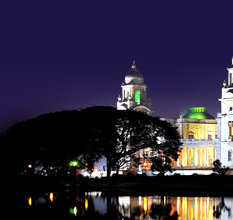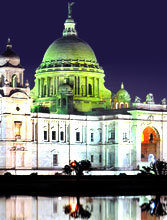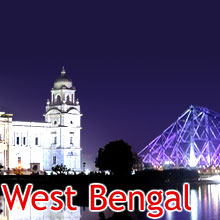 Dance is a unique art of expression. Be it celebration, remorse, anger, love or pain, dance moves can clearly define every expression. Talking about the Lathi dance of West Bengal, performed on Muharram, it confines within itself the feeling of remorse and anger, associated with this Muslim festival. During the first ten days of Muharram, the Lathi players display their art at several places, like road and country yards.
Dance is a unique art of expression. Be it celebration, remorse, anger, love or pain, dance moves can clearly define every expression. Talking about the Lathi dance of West Bengal, performed on Muharram, it confines within itself the feeling of remorse and anger, associated with this Muslim festival. During the first ten days of Muharram, the Lathi players display their art at several places, like road and country yards.The final performance of the Lathi dance is done at the Karbala ground, with 6-8 feet long bamboo stick, angled with metal tip, which is used like a sword during the performance. The dance is basically performed by a group of youths. The zeal is maintained by the sound of drums and brass cymbals. It is more like a sporty event, rather than a dance, mainly because it is more demonstration of valor, than being an art.
Lathi dance is divided into several sections - introduction, different warlike positions, battle, decree and rest. The tempo, which begins on slower note, gains fervor with time and finally goes to extreme at the climax. In the entire performance, the dancers skillfully spin their sticks, moving them to the front or sides. They also move these sticks under their legs or over their heads, along with the music. They create a warlike atmosphere with this performance.








